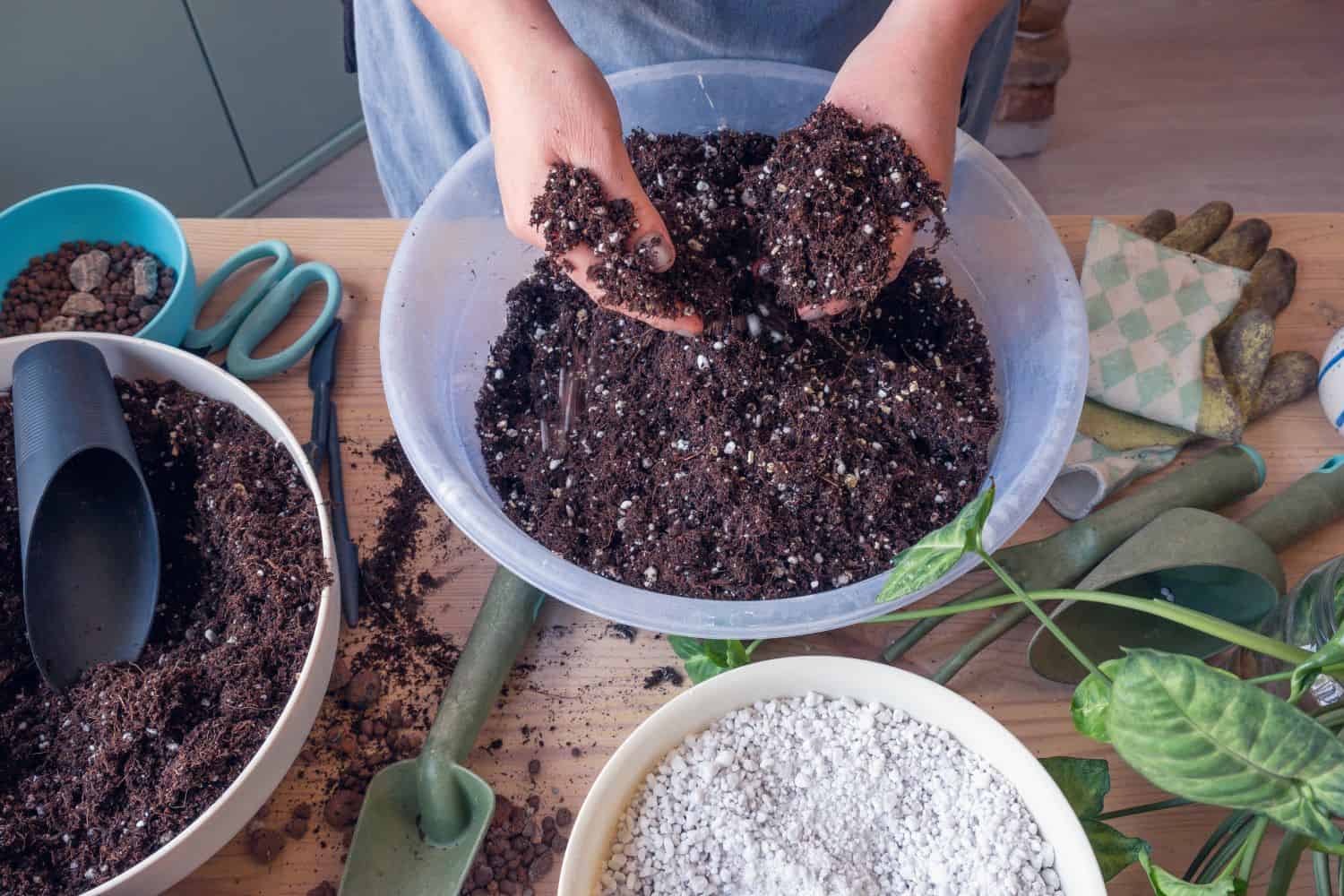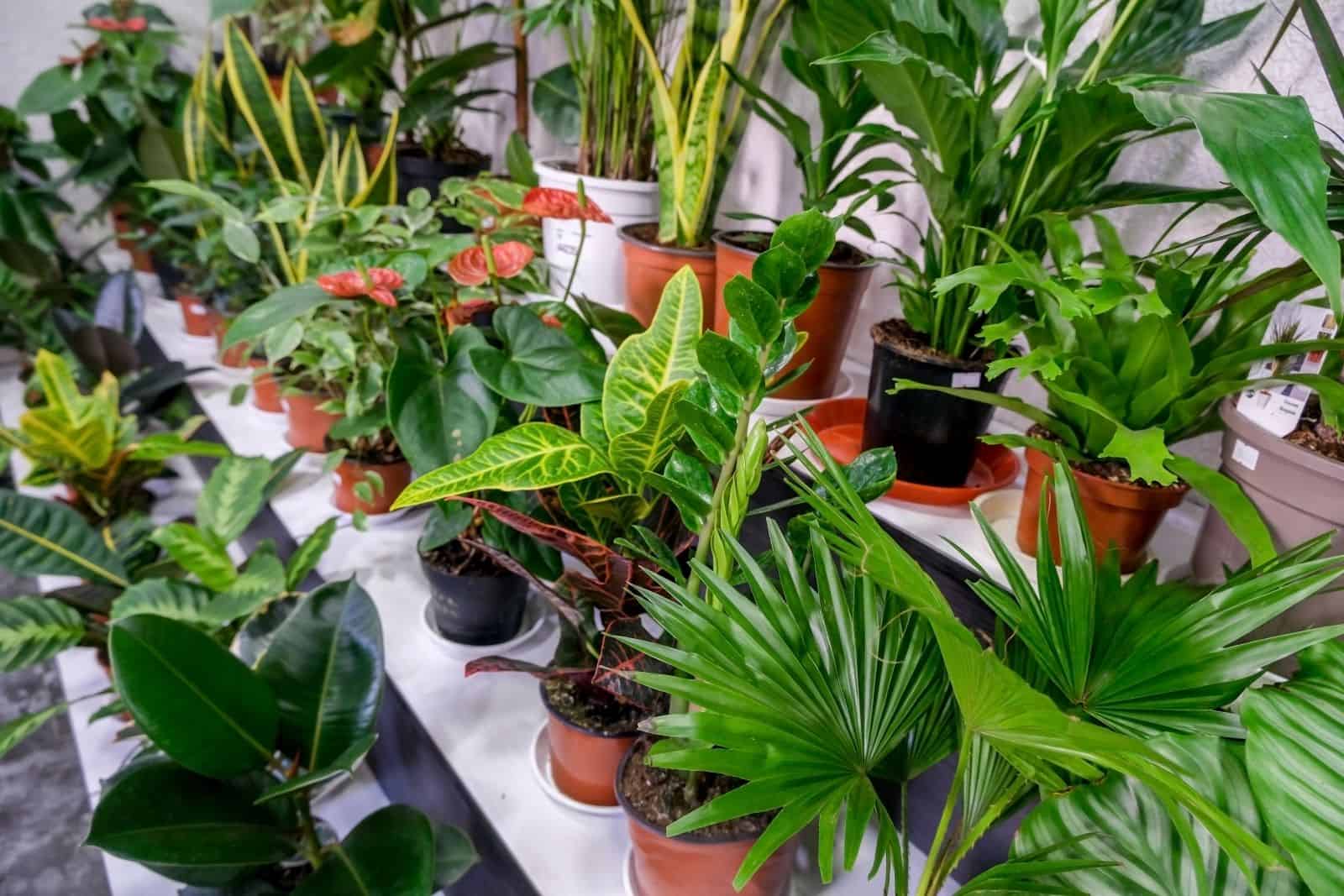Make Your Own Houseplant Soil Mix:

Make your own houseplant soil mix and you will save lots of money. You will also give your houseplants and container gardening plants the perfect growing media they need for optimal health and growth.
One of the most critical aspects of houseplant and container plant care is soil. The right potting mix can mean the difference between a happy, healthy plant and one that struggles. While buying pre-mixed potting soil is possible, it’s also easy to make your own.
This article about how to make your houseplant soil mix will cover potting soil recipes and the proper ingredients. That’s because houseplants grow best in a soil mix that is specifically designed for them.
A good houseplant soil mix comprises several ingredients, including potting soil, peat moss, and compost. Each component adds a particular characteristic to the soil mix. By varying the proportions, you can achieve the desired attributes. Let us discuss in detail the essential characteristics of potting soil mix and how to make a great potting mix.
Essential Characteristics of Houseplant Soil Mix
A good houseplant soil mix must provide these five things.
Houseplant Drainage
Plants require water to survive. However, excessive water can harm a plant. A well-drained soil mix prevents the roots from getting flooded and waterlogged.
Let’s explore the ideal mix of ingredients that drain the excess water to ensure the survival of the plant. Certain plants require good drainage, whereas others prefer wetter soil. Potting soils utilize perlite, sand, expanded shale, and sometimes slate to improve water flow through the soil.
Moisture Retention
Retaining water in the soil is crucial for a plant’s survival. It ensures a continuous supply of fresh water for plants during intervals between watering.
Water retention is directly linked to the porous area within the soil’s structure. The more porous your soil is, the better it can hold water. Soil’s moisture-retention capability can be enhanced by adding vermiculite, peat moss, and/or coco coir.
Soil Aeration
Aeration of soil is the exchange of oxygen and carbon dioxide in the soil’s pores and the atmosphere. Aeration is critical to avoid oxygen deficiency and carbon dioxide toxicity in the soil air.
Appropriately aerated soil has sufficient oxygen to allow for the respiration of aerobic microbes and roots. It also facilitates oxidizing at an optimal speed. Orchid bark, perlite, and vermiculite are the most common ingredients to improve soil aeration.
AD
pH Level
The pH level of soil determines whether it is acidic or alkaline. Some plants are acid-loving, favoring a pH of less than 6.5. Others prefer neutral soil with a pH of 7. Still others prefer alkaline soils having pH levels higher than 7.5.
The soil’s pH affects the ability of plant roots to absorb the available nutrients in the soil or potting mix. Certain nutrients are not available when the pH is either too high or too low.
Knowing the pH preferences of your plant will allow you to create soil conditions that work best for your plant. Organic materials, such as compost or worm castings, reduce the pH level. Lime can raise the pH of soil. For most plants, it is recommended to have a pH of around 6.5.

